News
Fitness Friday: 5 Exercises Modified For Golfers
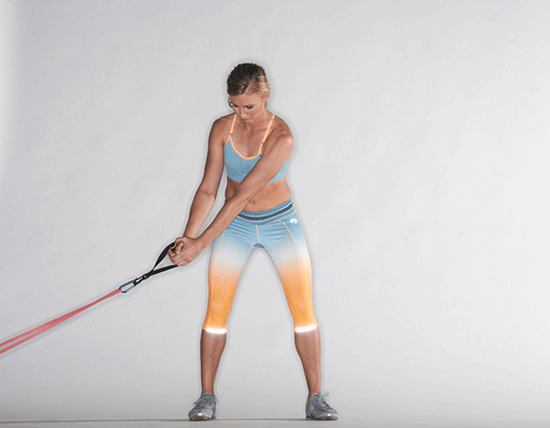
Push-ups are great. So are planks. Deadlifts do wonders for the posterior chain of muscles. And seated torso twists are terrific for mobility and core strength. There's a reason some exercises stand the test of time and others—like crunches, for example—get mothballed. Form follows function is an architecture term that means the design of the building is determined by its purpose. A building with 200 rooms could be ideal for a hotel. A building with lots of open space could be ideal for an office. So when science and observation debunk the effectiveness of a crunch, or upright rows or behind-the-neck shoulder presses, it's because the form of the exercise does not positively impact the function.
If you believe in the FFF concept, then you might be ready to take some traditional exercises and change their form to make them better suited to the function of enhancing your golf swing. Here are five you can experiment with and what the wrinkle in technique can do for your game.

1) One-legged push-ups. A standard push-up is terrific to strengthen a number of muscles on the anterior and posterior side of your upper torso. You'll need that strength for better golf posture, a more powerful swing, and the ability to stop the club's motion safely. But what if you could add a little lower-body work to the exercise? That's what happens when you get into your push-up position and then raise one leg off the ground—and keep it there. Now you're also strengthening the glutes (butt), quadriceps (front of thighs) and hamstrings (back of thighs). You're also fire the core muscles to keep the body stable while it awkwardly balances on one leg.
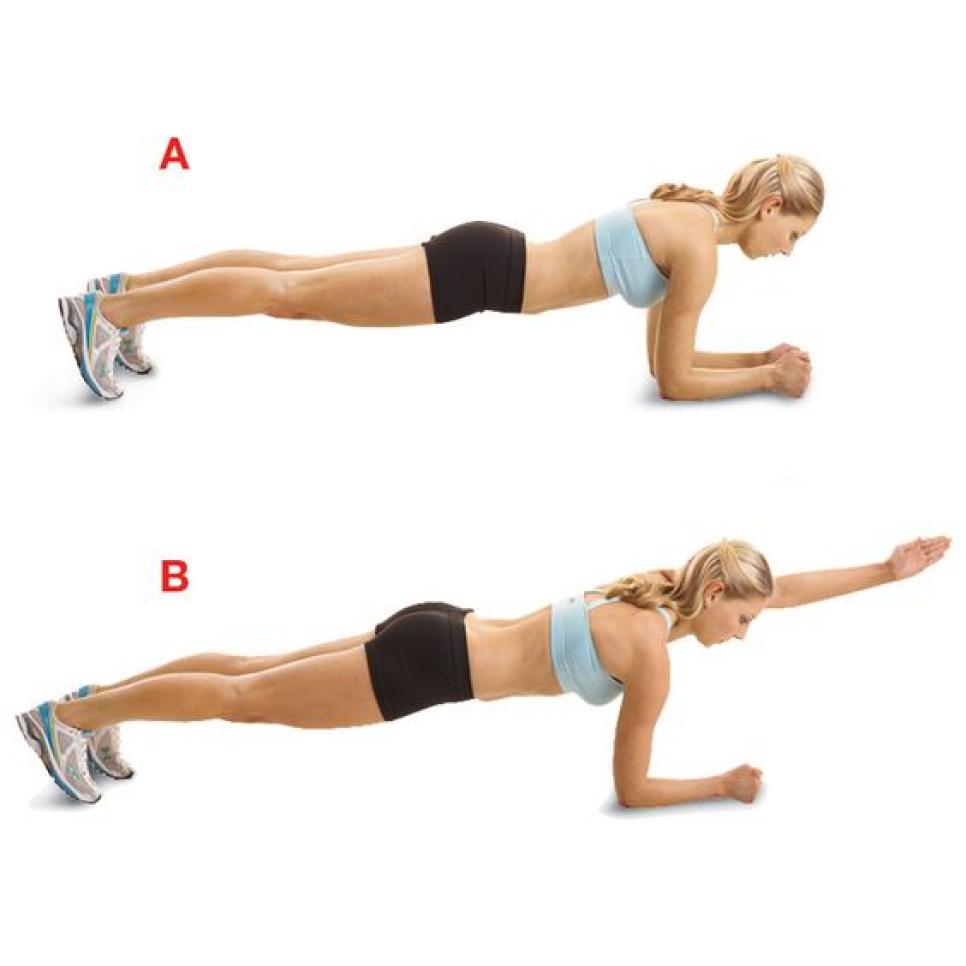
2) Speed planks. The problem with traditional planks, says Golf Digest fitness advisor Ben Shear, is that your arm and shoulder muscles tire much faster than your abdomen muscles, so there comes the law of diminishing returns in doing them. A better version is the speed plank I demonstrate (see the video) where you reach out and tap the ground in front of you and then to the sides by alternating hand positions. The woman in the photo above is reaching outward, but speed planks require you to tap the ground, too. This exercise adds a cardio component to the exercise and makes the muscles of the abdomen work much harder than if you stayed in a static planking position, thus they fatigue quicker.
Here's a video demonstration of speed planking:
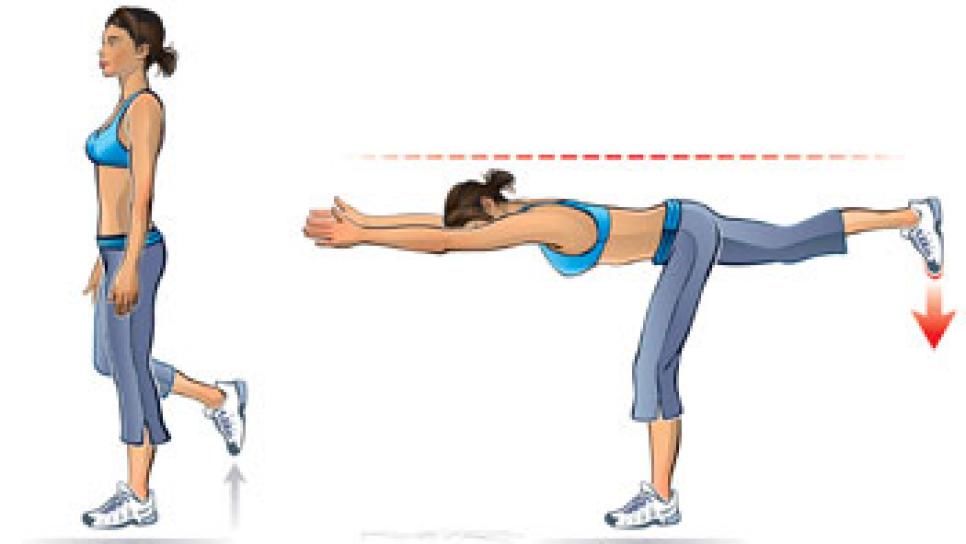
3) One-legged Romanian deadlifts with arms extended. Deadlifts are terrific to build muscle around the butt and upper legs. They also help promote better posture when you swing the club by nature of the movement. Romanian deadlifts also give you the added benefit of setting the body in a good, hip-hinged, athletic posture at the start. So to make this exercise even more beneficial for golfers, adding arm extensions outward as you hinge forward will help strengthen the erector spinae and other key muscles around the middle of your back. This will help protect your back from injury and help increase rotation. It also improves shoulder mobility so you can swing easily on plane. You can do these extensions with a weighted bar or stretch band for an additional challenge.
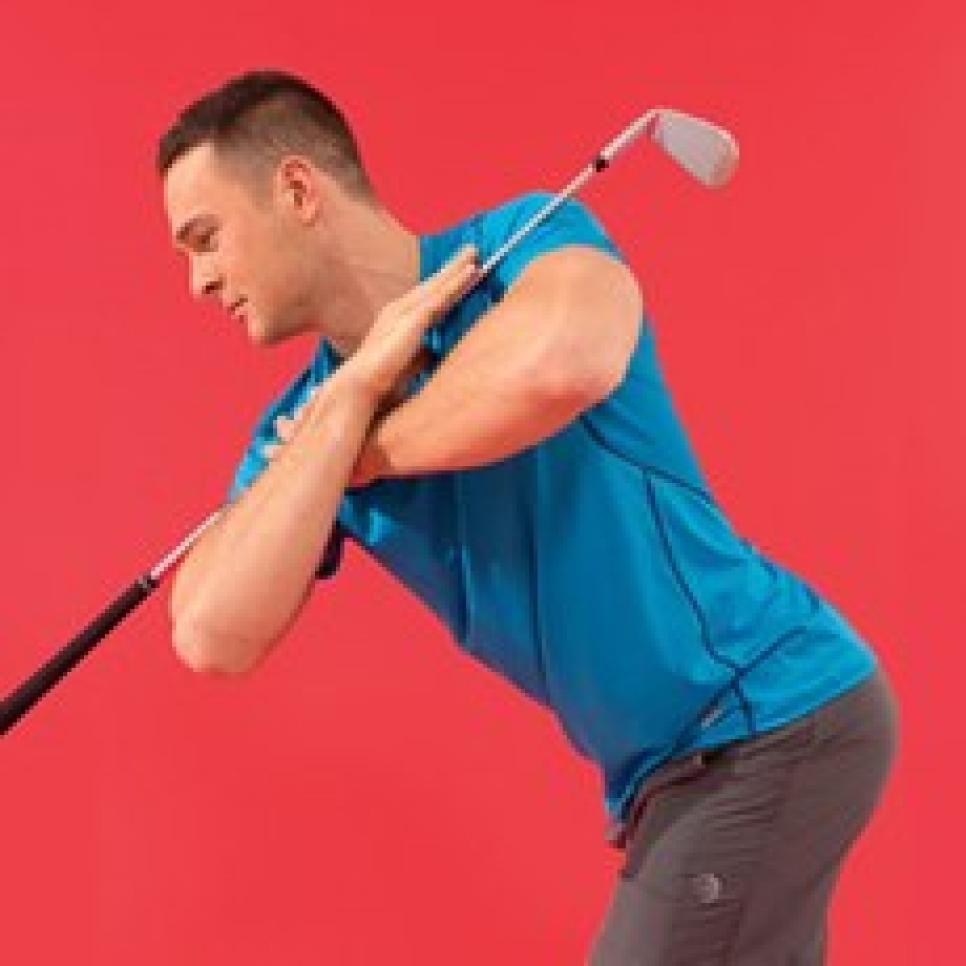
4) Torso rotations with a bar or club. The problem with using a dumbbell or medicine ball when you rotate from side to side is that it's easy to cheat. The purpose of this exercise is to increase strength and flexibility in the core muscles, particularly the obliques (sides of your torso). But if you look at this traditional medicine-ball rotation,
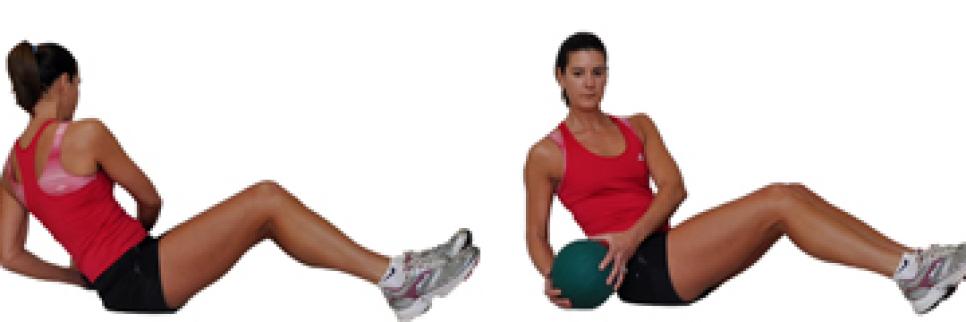
you can see that all the woman has to do is shift her arms from side to side. She does a decent job of rotating her torso, but you can ensure you do an even better job by pinning a weighted bar or golf club across your chest and rotating back and forth while keeping it there. You can even do this from a standing position (above photo). If you can train your body to get the brunt of its rotation through the use of the obliques, you'll swing better and avoid lower-back injuries.
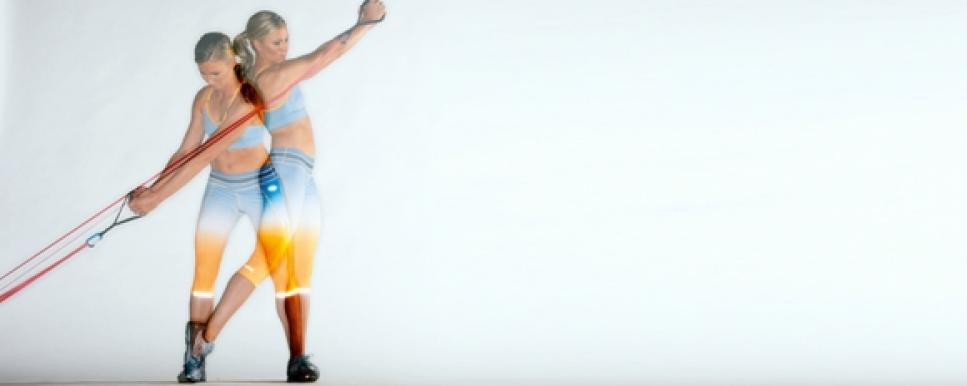
5) Reverse chop: Training the muscles to work in diagonal patterns is key for good golf, and chops certainly are a good exercise for that. You know what's better? Reverse chops. Not only do they train this cross-body pattern, from low to high, they also help ingrain the feeling of moving from a squatted, bent-legged position to one of complete extension just as you would going from downswing to finish during the golf swing. You're learning how to "load and explode" using ground force to create clubhead speed. Give it a try.